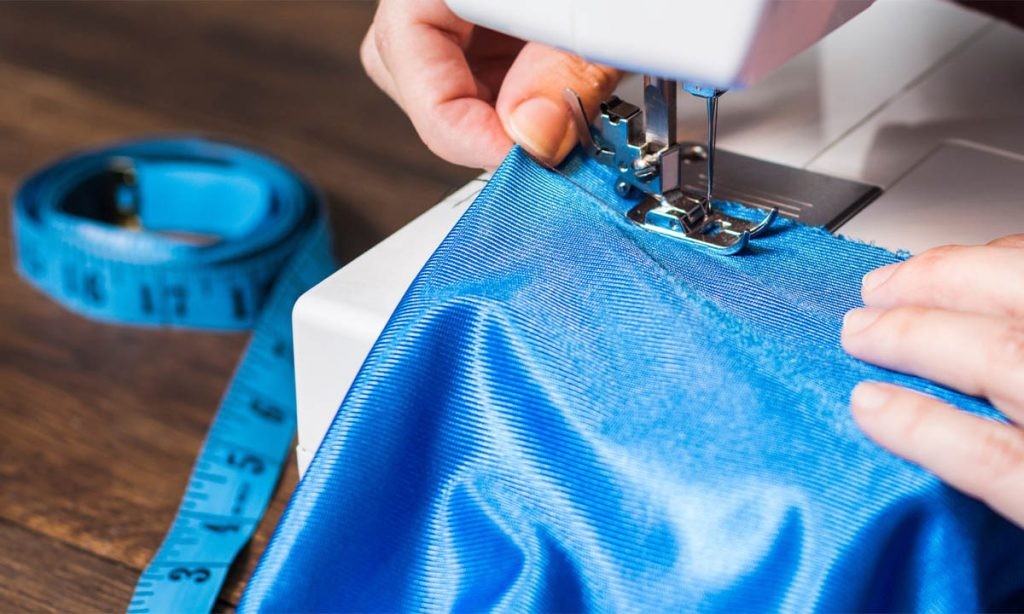Aspiring to break into the fashion world from the comfort of your own home? You absolutely can! This guide provides a roadmap to acquiring the necessary skills, knowledge, and mindset to learn fashion designing at home. We’ll explore essential steps, resources, and considerations to help you embark on your creative journey.
Building a Strong Foundation: Essential Skills
Learning fashion design requires mastering a diverse skillset. Here are some fundamental areas to focus on:
1. Sewing Proficiency
A woman working on a sewing machine. Source: craftsy.com
Honing your sewing skills is paramount. Start with the basics and gradually progress to more complex techniques. Practice working with various fabrics and mastering different seam types. This hands-on experience will be invaluable as you bring your designs to life.
2. Fabric Knowledge
Understanding textiles is crucial. Learn about different fabric types, their properties (drape, texture, breathability), and how they behave when worn. Knowing where to source quality materials is also essential.
3. Design Inspiration and Research
Immerse yourself in the fashion world. Study the work of established designers, analyze their styles, and research current trends. Platforms like social media, online magazines, and fashion shows can provide a wealth of inspiration.
4. Sketching and Visualization
Develop your ability to sketch your design ideas. While formal drawing skills are beneficial, even basic sketching can help you communicate your vision. Practice translating your 3D concepts onto paper.
5. Trend Awareness
Stay updated on the latest fashion trends. Follow industry publications, attend virtual fashion shows, and analyze trend reports. Understanding current and emerging trends will inform your design process.
Defining Your Niche: Choosing Your Fashion Focus
The fashion industry encompasses diverse specializations. Identifying your area of interest will help you tailor your learning journey:
- Ready-to-wear: Designing everyday clothing for the mass market.
- Haute Couture: Creating high-end, custom-made garments.
- Sportswear/Athleisure: Designing clothing for athletic activities and casual wear.
- Bridal Wear: Crafting wedding gowns and related attire.
- Accessories: Designing jewelry, handbags, shoes, and other fashion complements.
- Costume Design: Creating costumes for theater, film, or television.
Narrowing your focus allows you to develop specialized skills and build a strong portfolio in your chosen area. Consider your passions and long-term career goals.
Beyond Design: The Business of Fashion
Sketching a design. Source: India Today
Success in fashion requires more than just creative talent. Understanding the business side is equally important:
1. Fashion Marketing
Learn about marketing principles, branding, and target audiences. Understanding how to promote your designs and reach your customers is essential.
2. Industry Knowledge
Familiarize yourself with the entire fashion supply chain, from sourcing materials to manufacturing and retail. Understanding the roles of different professionals (pattern makers, merchandisers, etc.) will enhance your collaboration skills.
Self-Assessment: Is Fashion Design Right for You?
Fashion design is a demanding yet rewarding career path. Honest self-assessment is crucial:
Fashion design might be for you if:
- You are passionate and dedicated to fashion.
- You possess strong creativity and problem-solving skills.
- You are resilient and able to handle criticism.
- You are a good communicator and collaborator.
Fashion design might not be for you if:
- You have difficulty handling stress and tight deadlines.
- You prefer stability and predictable routines.
- You require constant external validation.
Conclusion: Taking the First Step
Learning fashion designing at home requires dedication, discipline, and a genuine love for the craft. By developing essential skills, focusing your interests, and understanding the business aspects, you can pave your way to a successful career in fashion. Utilize online resources, connect with other aspiring designers, and never stop learning and experimenting. Your fashion journey begins now!

